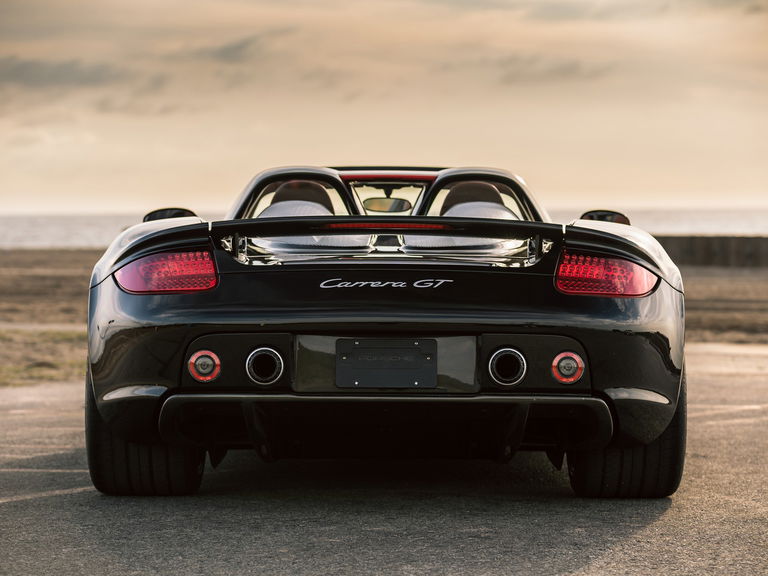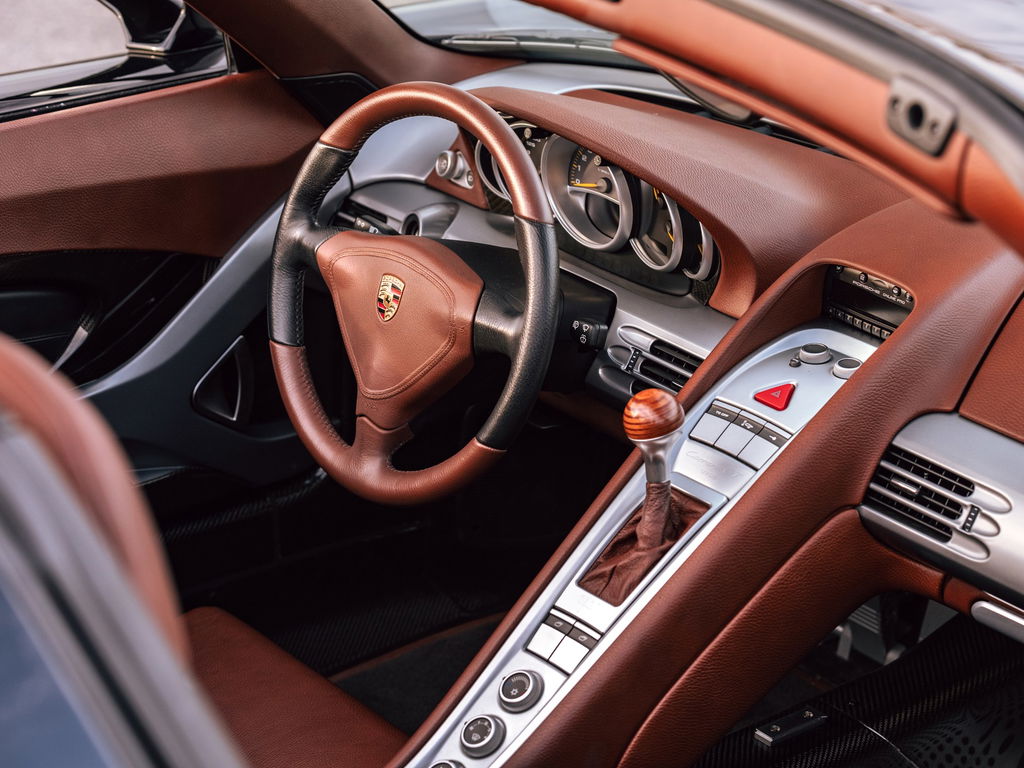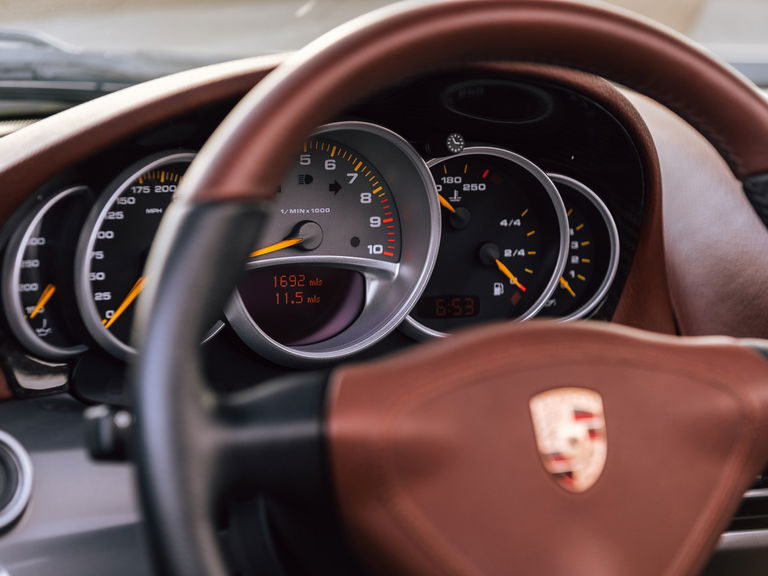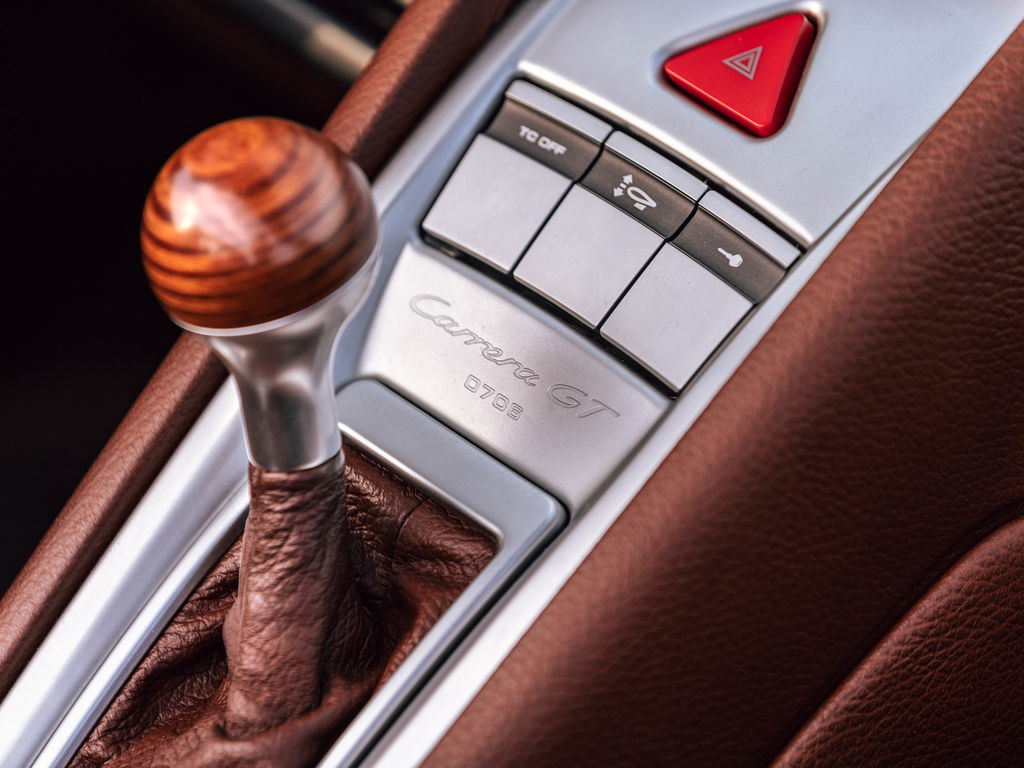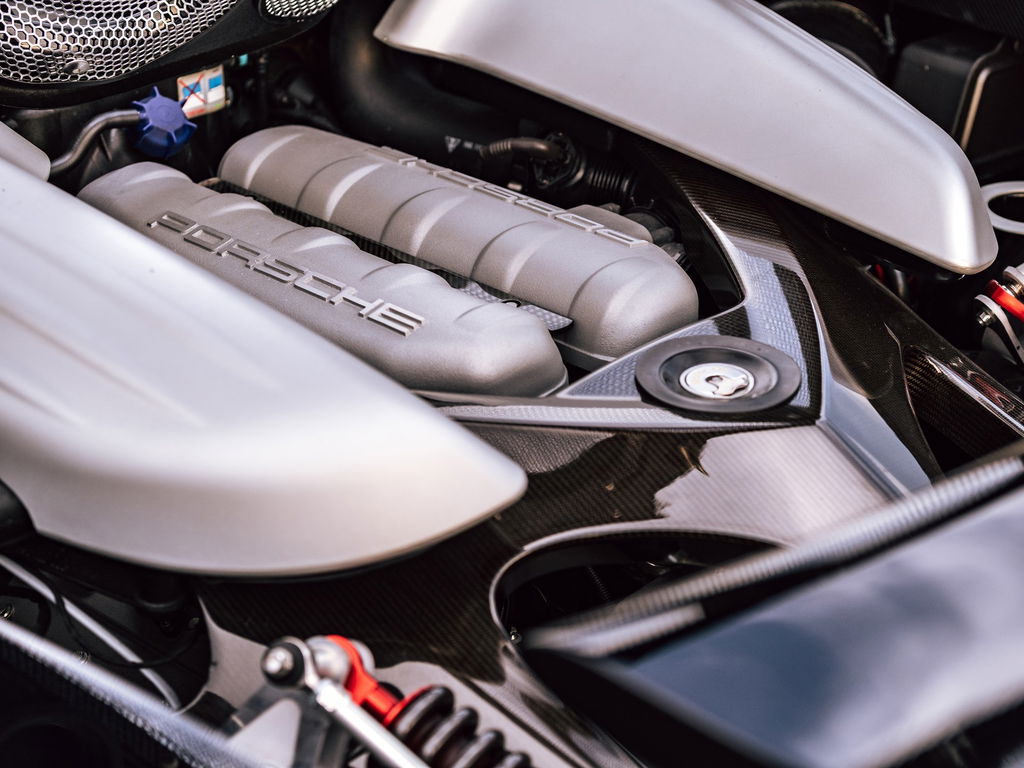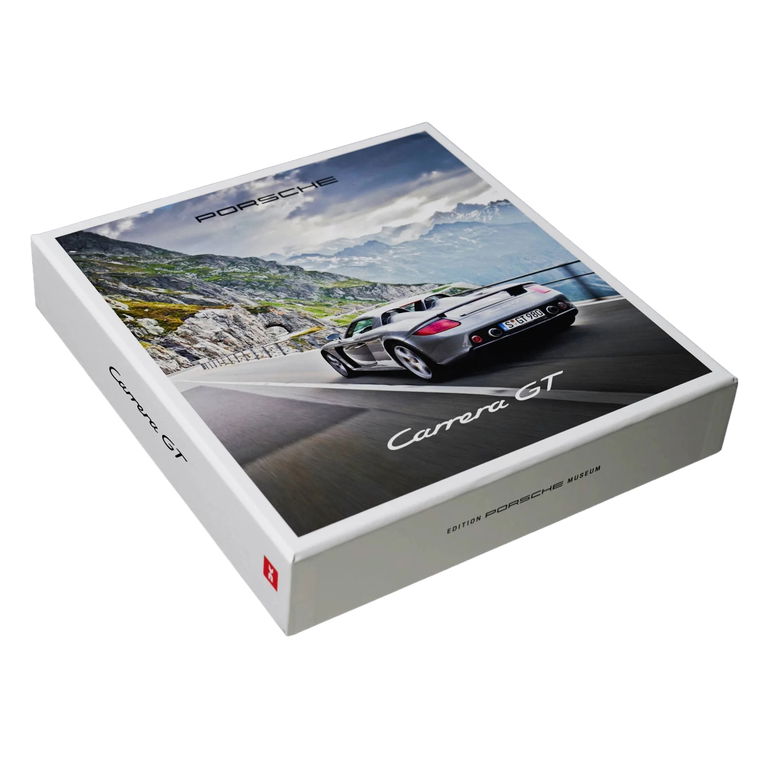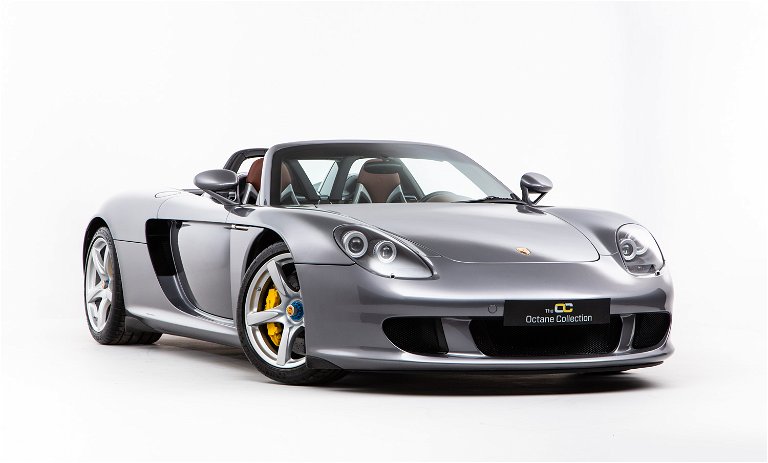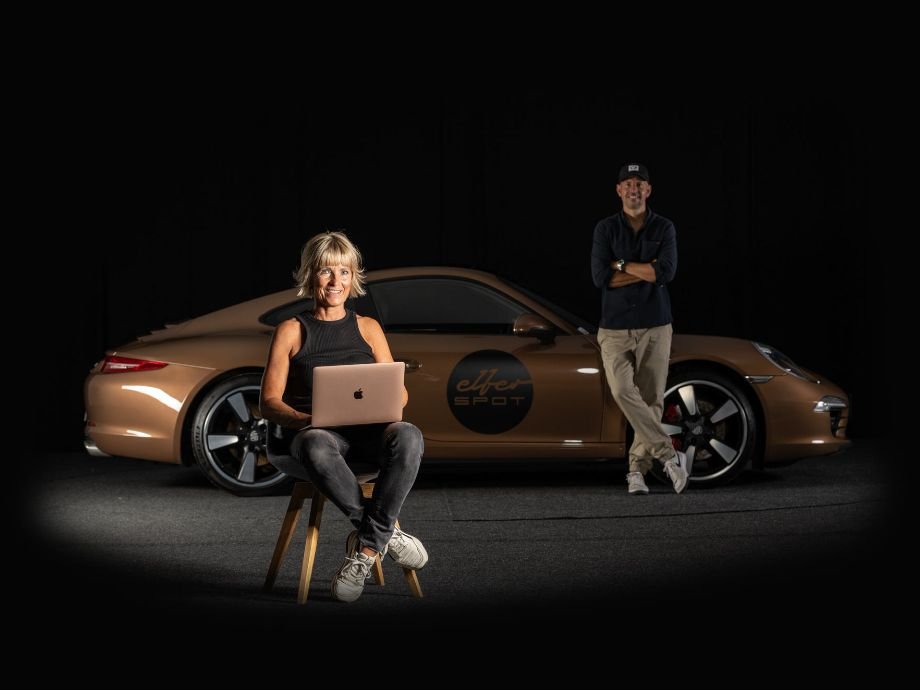Since production ended nearly 15 years ago, the Carrera GT has become increasingly recognized for its ideal combination of performance and an involved driver experience. With approximately 1,750 miles today, this Carrera GT is an excellent example and is ready for its next owner to drive and enjoy. Included with the car is a partial luggage set, owner’s manuals in their Carrera GT leather folio, and service records.
Porsche Carrera GT
Highlights
- Attractively finished in Black with Ascot Brown leather interior
- Driven approximately 1,750 miles from new; recently serviced
- The ideal combination of modern performance and analogue driving experience
Porsche Carrera GT for sale in black at RM Sotheby’s!
This Carrera GT is one of only a reported 103 examples ordered in Black, a subtle color that suits the dramatic styling. The car was delivered in May 2005 to its first owner in Newport Beach, California, who owned it until 2011. During his tenure, the Carrera GT was driven 1,251 miles and was regularly serviced at Newport Auto Center. It was then acquired by a collector in Texas, who owned the car for several years before it briefly returned to California. In 2015 the Porsche was purchased by a noted connoisseur on the East Coast, where it joined his impressive sports-car collection. Danbury Porsche has since handled the service work, with its most recent service being completed in August 2019. They also performed a full mechanical inspection and found the car to be free of any leaks. The clutch was also measured, which read well within the normal wear limit. An engine-out service to replace the real main seal was completed in 2014, and service receipts dating back to 2013 are on file. New Michelin Pilot Super Sport tires have recently been fitted, a marked improvement over the original tires for the Carrera GT.




